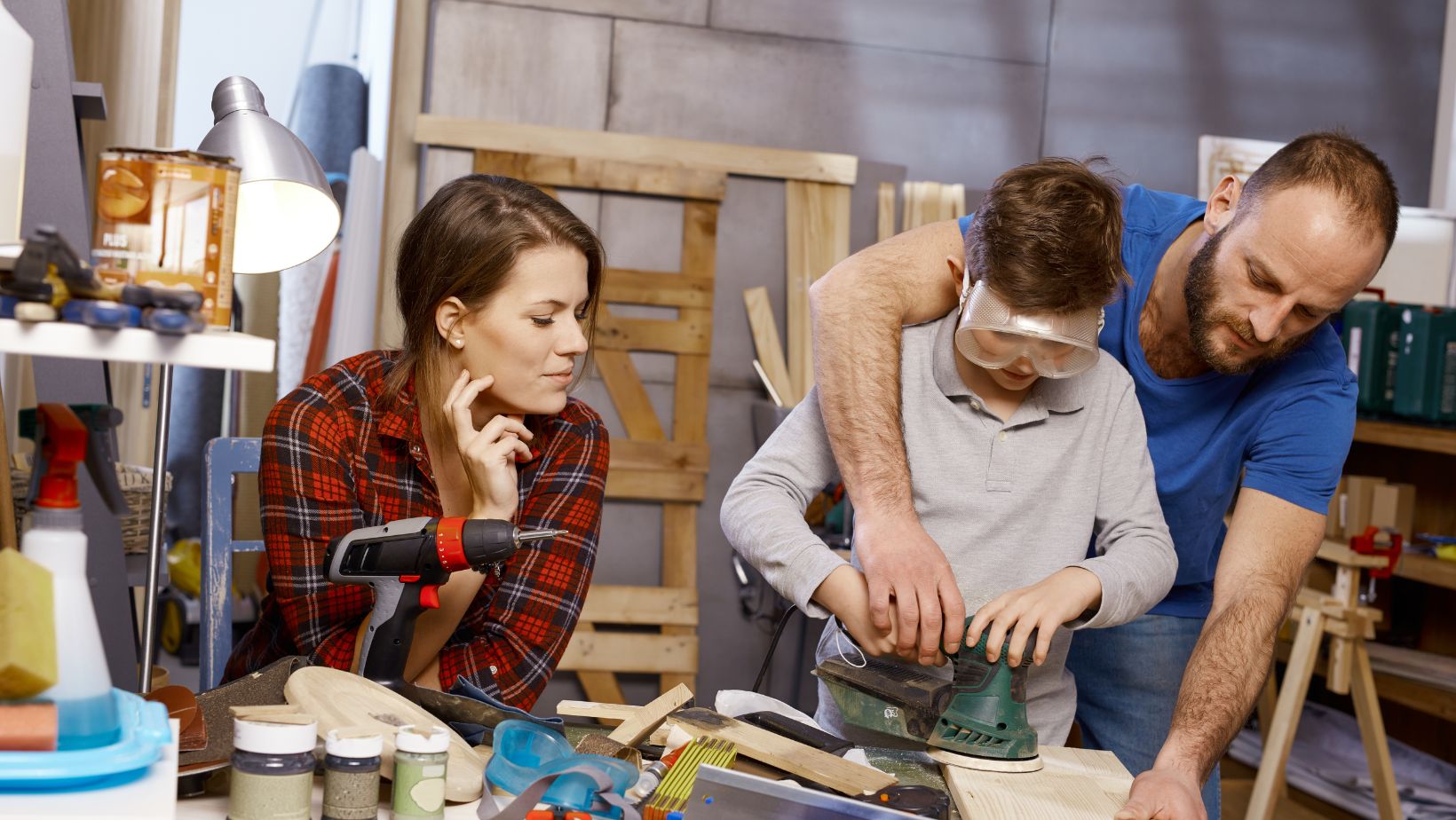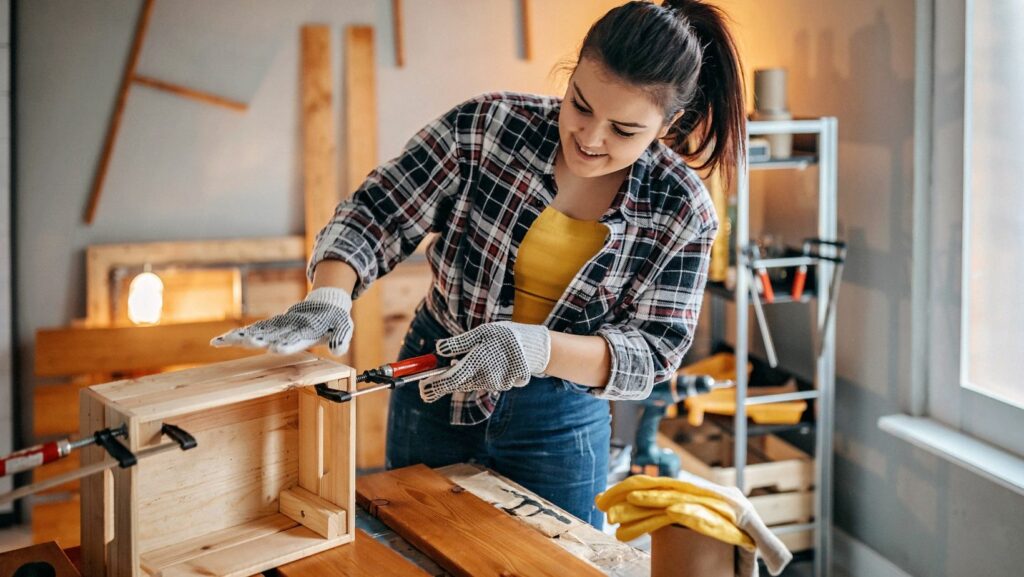DIY home improvement projects can be an exciting challenge. However, no matter whether you’re a seasoned DIY enthusiast or a beginner about to embark on your first project, safety should always be your top priority.
Like a high-stakes truth or dare game, there are inherent risks in DIY tasks, especially when it comes to using power tools, climbing ladders, or dealing with electrical wires.
Protective Clothing and Gear: Your First Line of Defense
Safety begins even before you pick up a tool or start a project. Ensuring you’re properly equipped with protective clothing and gear is critical to shield you from potential accidents or injuries.
DIY home improvement is not a truth or dare game where you can opt out of daring tasks; it’s a commitment to enhancing your living space and should not jeopardize your health and safety in the process. Taking the necessary safety precautions should always be your starting point.
Workwear and Footwear
When gearing up for a DIY task, the clothes you wear can either act as a protective barrier or pose a hazard in themselves. It’s essential to make informed decisions regarding your outfit. Here’s what you need to consider:
- Fit: Opt for clothes that fit you well and allow easy movement. Baggy clothing may get caught in tools or obscure your vision while working. Ensure your clothes are snug but not restrictive, allowing you a full range of motion.
- Material: Not all fabrics are created equal when it comes to durability and protection. Durable materials like denim or canvas provide a good protective layer against scrapes, cuts, or burns. On the other hand, synthetic fabrics like nylon can easily melt when exposed to heat or ignite, causing severe burns.
- Footwear: Never underestimate the importance of proper footwear while engaging in DIY projects. Closed-toe shoes with non-slip soles help prevent slips and trips, common occurrences in DIY workspaces.
For heavier-duty projects or when dealing with heavy tools or objects, consider steel-toed boots. They provide maximum protection against falling objects and prevent injuries to your toes.
Hand Protection
Our hands are invariably involved in most DIY projects, making them highly susceptible to injuries. From minor cuts and scrapes to severe burns or puncture wounds, the right gloves can serve as a protective shield. Consider the following when selecting gloves:

- Leather gloves: Thick leather gloves offer excellent protection against cuts and scratches, making them suitable for tasks like carpentry, gardening, or moving heavy objects. They are also heat resistant and can protect against minor burns.
- Rubber or latex gloves: When dealing with chemicals or wet materials, regular gloves won’t suffice. Rubber or latex gloves provide a waterproof barrier and help protect your skin from chemical burns or reactions.
- Insulated gloves: Electricity can be a silent and lethal hazard in DIY tasks involving wiring or electrical appliances. Insulated gloves designed specifically to resist electrical charges should be worn when dealing with any electricity-related tasks.
Respiratory Protection
Invisible and often unnoticed, airborne dust particles or fumes can be a silent threat in many DIY tasks. From sanding that releases fine wood particles to painting or stripping paint that produces harmful fumes, proper respiratory protection is a must. Here’s how to choose the right protection:
- Disposable masks: These are sufficient for light tasks that generate a minimal amount of dust, like light sanding or sweeping your workspace. These masks provide a basic level of protection against non-toxic airborne particles.
- Respirators with replaceable filters: More heavy-duty tasks that generate significant dust or involve harmful substances require respirators with replaceable filters. This gear is designed to filter out specific contaminants.
For example, when sanding, a dust mask with a P100 rating would be appropriate, and when working with paint strippers or other chemicals, an organic vapor (OV) respirator is required.
The right gear can make a significant difference in your safety during a DIY project. So, dress appropriately and gear up before you step into your DIY workspace. It’s not a game of truth or dare but a task that requires seriousness about your safety.
Ensuring Eye and Ear Safety
When engaging in DIY tasks, it’s crucial to remember that some of our most sensitive organs—our eyes and ears—are particularly vulnerable. A small errant splinter or a tiny fragment can cause serious damage to your eyesight, and prolonged exposure to excessive noise can lead to hearing impairment.
As you upgrade your home, don’t treat the safety measures lightly or turn the exercise into a risky truth-or-dare game with your health. Instead, ensure you have the right safety gear to protect these vital senses.
Eye Protection
Your eyes are susceptible to damage from airborne particles, chemical splashes, and harmful radiation. As a DIY enthusiast, prioritizing eye safety means investing in quality protective eyewear:
- Safety glasses: These are designed to provide robust frontal protection. They are your go-to for common tasks that generate small debris, such as hammering, screwing, or manual cutting.
Make sure the glasses have a snug fit and sit comfortably on your nose and ears. Consider glasses with anti-fog and scratch-resistant lenses for long-lasting use.
- Safety goggles: When the task involves flying debris, dust, or chemicals, regular safety glasses might not offer sufficient protection. In these instances, safety goggles, which form a seal around your eyes, providing all-around protection, are recommended.

They are especially crucial when dealing with tasks that could lead to splashes of harmful liquids, like when painting or using heavy-duty cleaning agents.
Hearing Protection
While it might not be instantly apparent, exposure to the high-decibel noise produced by power tools can, over time, result in serious hearing loss. Here’s how you can prevent this:
- Earplugs: These are compact, easy to use, and provide a decent level of protection from moderate noise. Most earplugs are made of foam and can be simply inserted into the ear canal, effectively reducing the noise level. They’re suitable for most DIY tasks that involve the use of power tools.
- Earmuffs: For projects that involve louder tools like chainsaws or hammer drills or prolonged use of equipment, earmuffs are recommended. These fit over the entire outer ear and offer a higher level of protection than earplugs. They can be more comfortable for longer periods and are easy to put on and take off.
Taking these precautions helps ensure your DIY home improvement tasks remain a fun and safe endeavor rather than turning into a dangerous gamble with your health. Proper eye and ear protection should never be an option but a standard practice in every DIY project.
Final Remarks
DIY home improvement tasks can be thrilling, but they’re not a truth or dare game. There should be no compromising on safety.
Having the appropriate protective gear is the key to ensuring your DIY journey is both safe and satisfying. Invest in high-quality protective clothing, hand, and respiratory protection, as well as eye and ear safety equipment.
With these safety measures in place, you’re ready to tackle your DIY projects with confidence, knowing you’re well-protected.


More Stories
What Are The Different Types Of Lawn Sweepers And Which One Is Right For You
How Home Improvements Can Boost Comfort, Efficiency & Resale Value
A Beginner’s Guide to Growing Houseplants